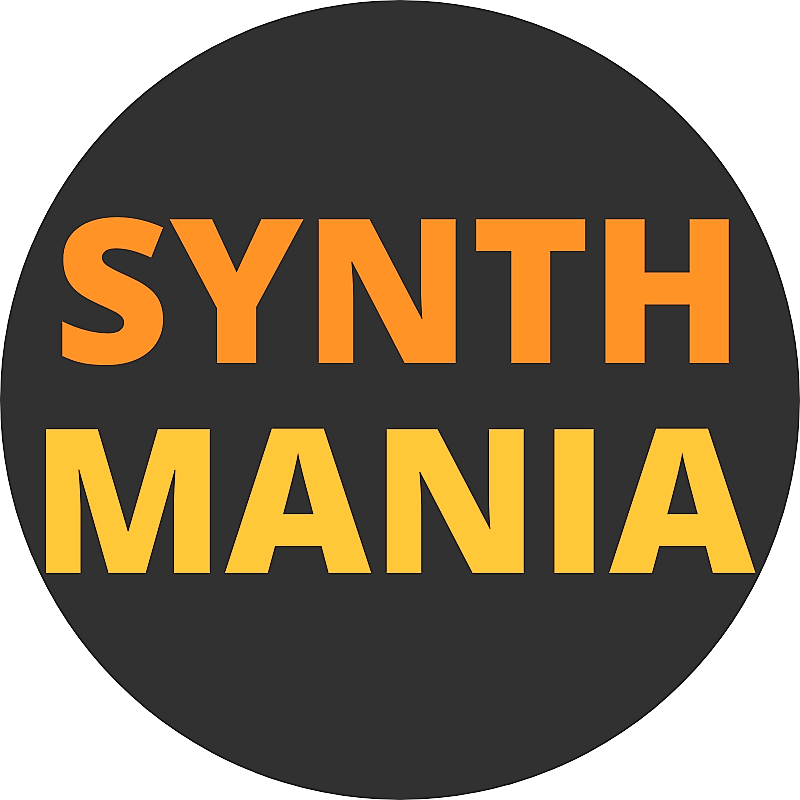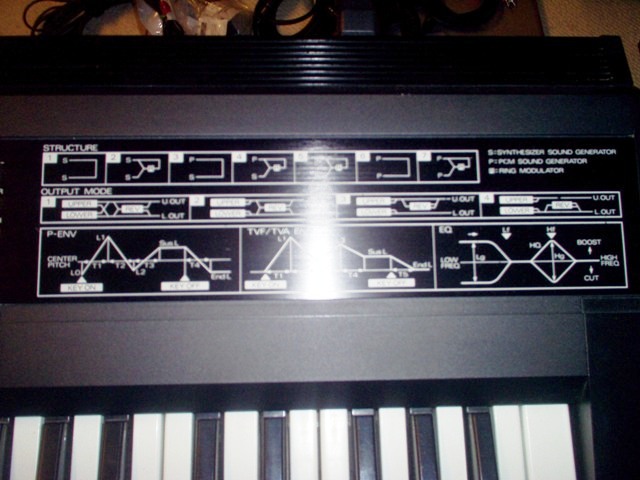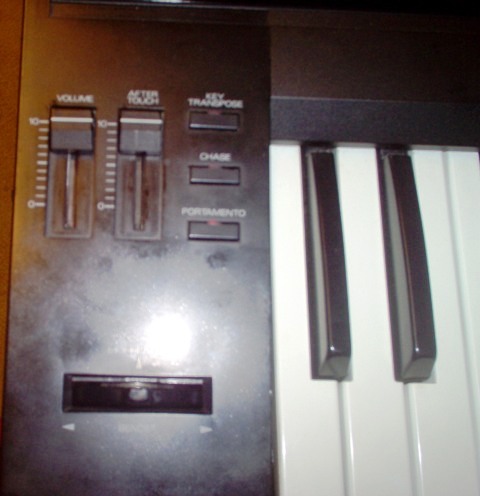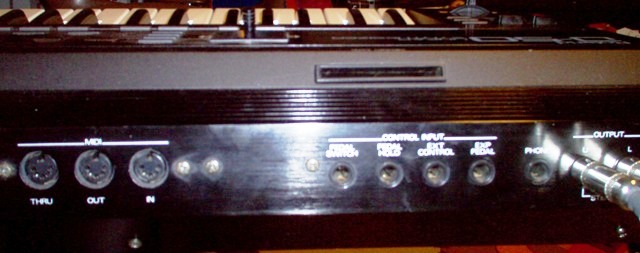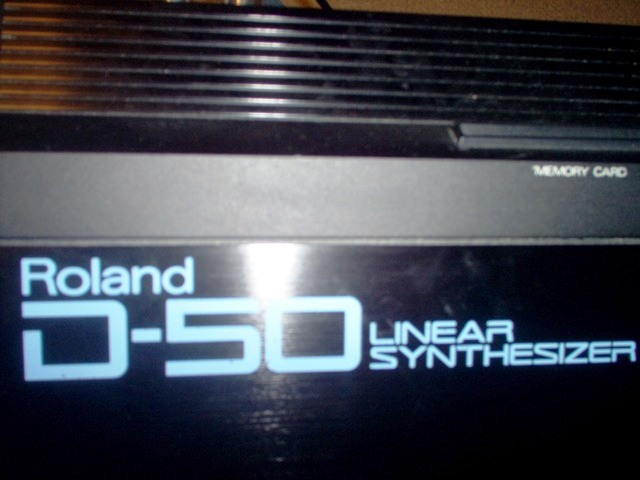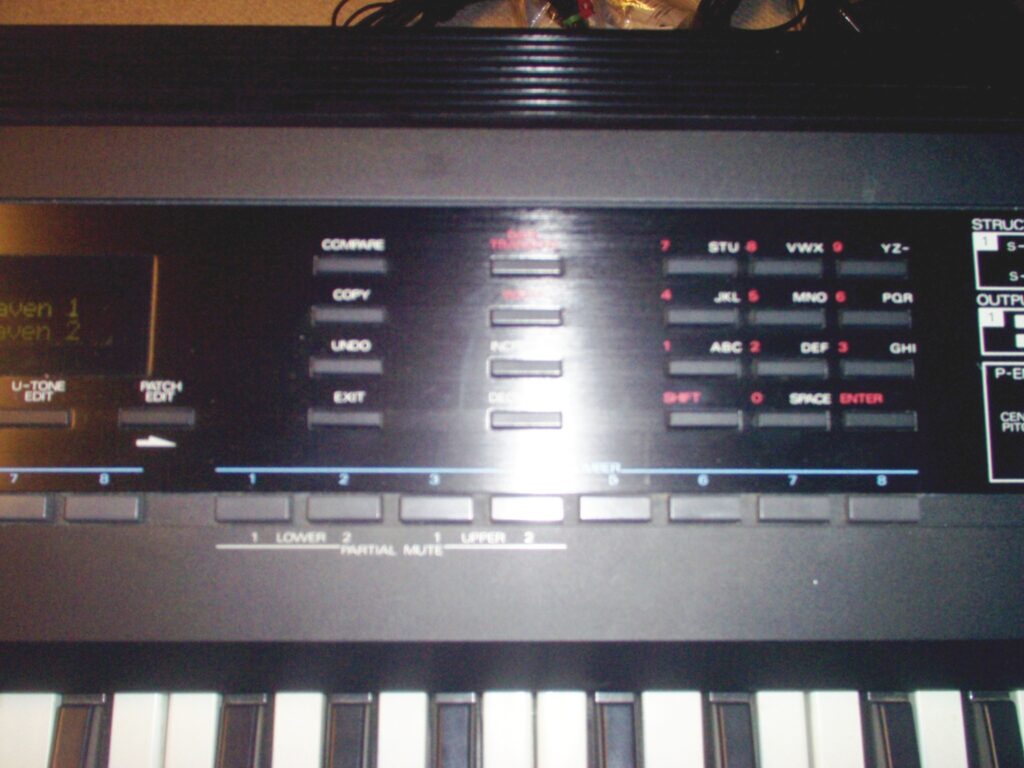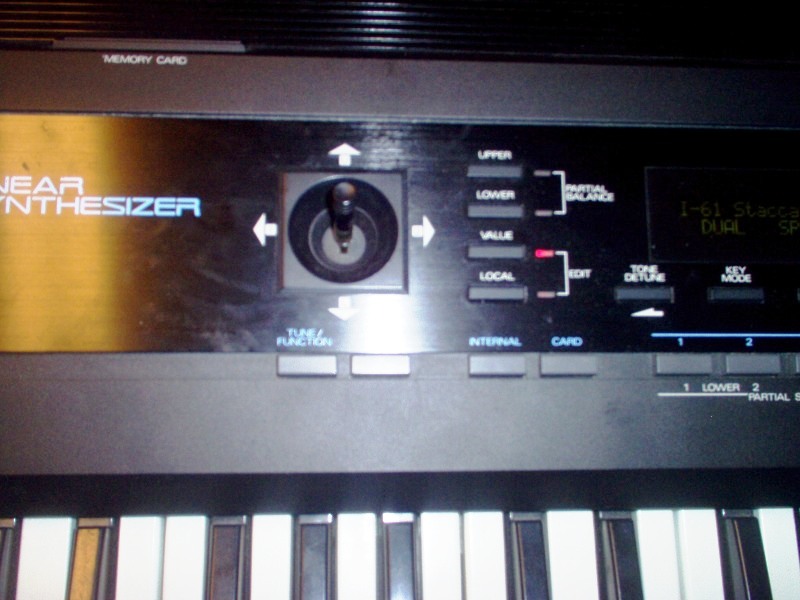Linear Synthesizer

I LOVE THE D-50. After my Casio CZ-1000, it’s the first “professional” synth I ever bought, and it still ranks as my favorite synthesizer ever.
It’s the work of genius: at the time (1987), ROM was still expensive, and samplers were a lot more expensive than synthesizers (at least those samplers in the ‘high’ leagues, such as Emulator, Fairlight, Synclavier). The solution from Roland was to incorporate in ROM small snippets, very short “attacks” of real and classic instrument waveforms, place theme at the beginning of a sound, and finish off with standard, oscillator-based analog/digital synthesis. Since the first portion of a sound is the one that strikes us with a first impression of realism, L.A. (Linear Arithmetic) synthesis was very successful because allowed incredibly realistic results with very little ROM. The Korg M1 followed the year later with an improved ROM set, and was even more successful than the D-50 ever was. Short loops very also incorporated in the D-50’s 100-block ROM. Famous “snippets”, or transients as they are called include PCM 33 – Steam – useful to build wind instrument patches; PCM39 – Lips1 – used in many great trumpet and trombone patches; PCM 47 – Pizz – from which the great “Pizzagogo” patch is built upon; PCM 68 – Spect1 – classic example of LA synthesis, many patches use the Spectrum waveforms; PCM 95 – Loop19 – you’ll recognize this as being used in the famous “DigitalNativeDance” patch; PCM 98 – Loop22 – a complete, cool loop; and finally, the two “regular”, old style analog waveforms on board, used to “finish off” the patches (and sometimes, depending on the structure used, they are by themselves), WaveSAW – typical saw-tooth waveform, and WaveSQU , typical square waveform.
The D-50 is – in my opinion – together with the Yamaha DX7 and Korg M1, one of the three classic mid-range digital synthesizers of the ’80s. I fell in love with this synth the moment I heard the factory patch “Staccato Heaven” at the store, and had to have it. The sonic characteristics of this wonderful-sounding synthesizer are very particular: digital, with short loops that remind of early samplers, and analog-warm at the same time. A marriage made in synth-heaven.
The first patch one hears when powering up the synth is the very famous “Fantasia”, an amalgam of digital bells and warm synths, with a slightly detuned flavor. This patch is a perfect example of the sonic character of the D-50. Other famous patches include “DigitalNativeDance”, “Soundtrack”, “Pizzagogo”, and “Glass Voices”.
Also there were four factory sound expansion cards, that observed the following guidelines: Sustain Group, Decay Group, Sustain Group II, Decay & S.E. Group II (i.e., mallets, drums, reeds etc.) Go to the four Factory Sound Expansion Cards pages
New Age great Enya’s use of the “Pizzagogo” patch is an example of how well-suited to ambient/new-age (but not only, of course!) this synth is.
The D-50 was also the first synth to incorporate an on-board reverb/multi-fx unit, a fact that contributed to its legendary sound. Previous manufacturers (i.e., ARP with spring reverb on the 2600; Korg with Chorus/Ensemble/Phaser on the PolySix, Flanger on the Trident, DDL delay on DW-8000; Yamaha with _____ ) had started implementing effects to some extent, but Roland went full out – and Korg actually outdid them the year after with the best-selling M1.
The character of the D-50 sounds is one of richness, analog mixed with crystalline digital perfection, warmth, and an overall aural beauty that’s hard to follow. Recently, Roland’s own V-Synth reminded of the D-50 thanks to (in a few cases) the low-grade samples, the sonic character, and the amazing editing possibilities it offers -and now even includes a virtual D-50 in a card that you can boot off, to transform the V-Synth in a complete D-50.
Roland D-50 audio demos
Additional Roland D-50 audio demo
An ambient demo I created utilizing a D-50 only:
Roland D-50 photos
Roland D-50 manual
Roland D-50 factory patches in .mid and sysex
Roland D-50 tips, suggestions and tricks
Initializing the D-50: turn on while pressing “DATA TRANSFER” and “0” at the same time. This will clear the internal cache and solve MIDI problems.
LOADING SYSEX BULK DUMPS FROM CAKEWALK SONAR: The Roland D-50 is an older generation machine, so I found that when I’m sending sysex data from modern sequencers such as the one I use, Cakewalk Sonar, I get the “MIDI transmission error” message, because the synth cannot handle the speed at which the sequencer is sending the sysex data. The solution, found on Sonar’s sysex Help section, is to tweak the “TTSEQ.ini” file in the Sonar folder – basically setting the “SysxSendPacketSize” to 64 as shown in the screen print below. This makes the flow slow enough that the D-50 will be able to handle it.
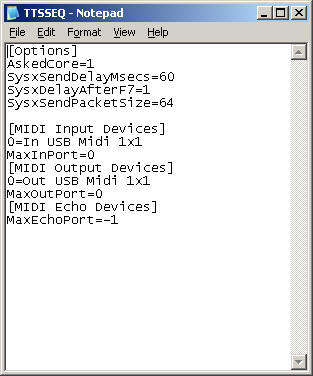
ALSO IMPORTANT: When setting up the D-50 to receive the sysex data: MAKE SURE YOU HOLD DOWN THE “DATA TRANSFER” button when you press “(B.LOAD)”. Then you can release the two buttons and finally press “ENTER”. If you don’t keep the “DATA TRANSFER” button pressed at the same time, the bulk load won’t work. Finally, sometimes the D-50 will freeze after completing the data transfer. Not to worry. Just turn it off and on again, and it will go back to normal, with the new patches you just loaded in memory ready to play.
ALSO NOTE: SOME MIDI INTERFACES DON’T SEEM TO WORK WITH THE D-50 – This had me scratching my head! I was trying to load patches from Sonar to the D-50 via an M-Audio “MIDISport Uno” interface: I have used this handy little interface extensively with my laptop and never had any problem. BUT, with the D-50, THE “UNO” DOES NOT WORK, no matter what settings on the ttseq.ini file. After an hour of trying and getting MIDI errors, I switched to my older M-Audio USB MIDISport 1×1, and that WORKS FINE. In the past, I used an Opcode MIDI Translator that also worked fine. And I will try with the MIDI on the M-Audio FireWire 1814 and will report about that one.
Patch analysis: recreating the “Soundtrack” sound
It’s not an easy task… as usual with a lot of D-50 patches, it uses 4 partials, so it can be complex to recreate perfectly, but I’ll write down the most important parameters and most of all – provide audio examples (single note at useful range for this patch – C3, C4, C5, C6) – so you can try to emulate it on another synth.
Keep in mind that this is just an approximation, because there are several other parameters that would take forever to analyze… for instance, the envelopes of Lower and Upper Partial 1 changes dramatically by velocity release… Pitch envelope and pitch modulation… slightly different tunings per tone… there are different LFO rates… there are EQ and Chorus settings… there is slight filter aftertouch etc. etc… AND there is the on-board reverb processor, which modern processors or plug-ins are way too hi-fi to reproduce… I’d suggest getting a $50 older unit such as the [url=http://www.synthmania.com/rex50.htm]Yamaha REX50[/url] – You’ll have to ‘eyeball’ these parameters by ear as best as you can – and you really are going to need to see the patch on an editor to see what’s really going on. Anyway, here it is – To help a bit more, I recorded dry and reverbed versions.
Patch: 37 Soundtrack (without reverb: Soundtrack no rvb)
Key Mode: Dual
Split: C4
Output mode: 1 (Upper and Lower in stereo passing through reverb)
Reverb balance: 63%
Upper Tone name: MelloTones
Lower Tone name: BriteFifth
Balance (between Lower and Upper tones): 50%
Lower Tone Structure: 1 (S + S) (synthesis only)
Lower Tone Balance: 70
Upper Tone Structure: 1 (S + S) (synthesis only)
Upper Tone Balance: 70
Lower Tone Partial 1 waveform: Square (these are a fifth apart)
Lower Tone Partial 2 waveform: Square
Upper Tone Partial 1 waveform: Square
Upper Tone Partial 2 waveform: Square
Roland D-50 SQUARE waveform (first at 60% TVF {initialized}, then 100%)
Roland D-50 specs
| Year of release | 1987 |
| Polyphony | 32 (but realistically often 8, since a typical patch is made of 4 partials). |
| Sound generation method | Linear Arithmetic |
| Preset memories | 64 + 64 on card |
| MIDI | in, out, thru |
| Sound expansion capabilities | cards |
| Sequencer | no |
| Arpeggiator | no |
| Effects | yes |
| Velocity | yes |
| Aftertouch | yes |
| Display | yes |
Roland D-50 links
